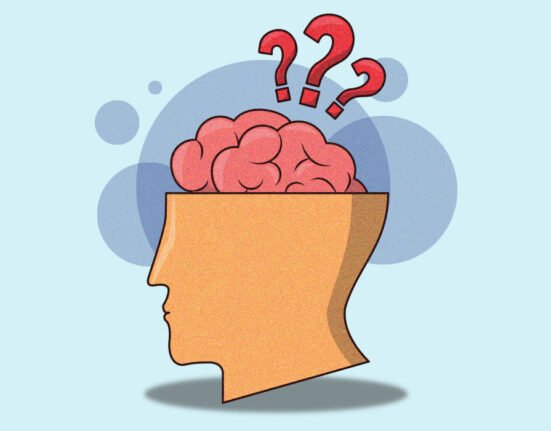When we hear the word ‘leadership’, of course, most of us imagine having a huge responsibility or something related to managing an organization or being in some powerful position. Yes! Leadership is leading an organization, a group of people or any person having a high level of knowledge and skills related to a certain task. To be precise, leadership skills include inspiring and motivating people and convincing the followers to succeed in achieving the goal.
Table of Contents
- What are good Leadership Skills?
- Leadership Qualities in the Professional Field
- What are the 3 main types of Leadership?
- What factors contribute to effective Leadership?
- Conclusion
What are good Leadership Skills?
Talking about leadership skills, unsurprisingly, there is no particular explanation for this term. Having good skills has always been a positive point for being a leader. Leadership skills include the ability to encourage the followers, empower, encourage initiatives etc. also an organization. Leaders should have the skill to motivate, inspire, build a common purpose and deliver results. Even though we expect to have great leadership qualities or skills, not every great leader possesses the same qualities because of communication abilities and personality traits.
Leadership qualities in the Professional field
In a workplace, a leader is expected to have certain skills which are the most in-demand ones. These include creativity, active listening, flexibility, time management, proper communication skills, knowledge of administration, ability to build trust, project planning, ability to inspire others, persuasion skills and most importantly a strong charisma.
When we talk about ‘leaders’, it can be understood as an employee who is occupying a supervisory position. They are expected to know how to connect with their employees, create unity not only among the employees themselves but also associate with the workplace and further facilitate their employees to take part in the decision-making.
According to some surveys, it has been reported that many leaders from an organization fail to meet the expectations of the employees, which has a direct or indirect impact on their mental health as well as their performance. Leaders’ communication at the workplace has a direct influence on their performance, motivation, productivity and morale.
These surveys say that most organizations experience a leadership gap. Some say, that no proper management training has been provided. Most of them feel like leaving their job and most of them don’t trust their boss to say the truth. Most employees feel that they are not listened to or trusted in a workplace; also they feel that they are not being valued enough in regards to their talents or skills, which mostly discourages showing better performances.
What are the 3 main types of Leadership?
Lewin, Lippitt and White in their study of leadership styles (1939), found out that leadership styles are of three types Authoritarian, Participative, and Delegative.
1. Authoritarian
which is also known as ‘Autocratic’, in which the leader has full control over his team and strictly follows the rules and regulations by keeping in touch with them by maintaining professionalism in a very strict manner. The team members are not allowed to make any decisions or raise their voices against any important matter. There are no possibilities of suggesting any ideas regarding any topic. The employees are expected to follow the rules without any doubt.
The only advantage of this type of leadership is the high efficiency of work because every decision is handled or maintained by the leader to gain achievements. This method may raise incompetence and instability among employees but fast decisions are taken where jobs are delivered efficiently.
2. Participative
which is also known as ‘Democratic’, in which the whole team is allowed to make decisions. This encourages the employees to input new ideas and make the best decision out of them. Moreover, every employee is motivated to express their thoughts. But in the end, the leader gets to decide the final output. Employees under such leadership are truly motivated to work professionally and devote more time to the work because they feel that they can share their interests and ideas by having little control over their work.
The only drawback of this leadership style is that it increases the decision-making time as every employee shares their opinions. Therefore, this style is less preferred in many organisations, especially during exigencies or crises. This is because the decision-making time may get diluted as a result of analysis of each employee’s opinions. This leadership style is mostly experimental and is recommended for teams who want to learn new things by sharing their ideas.
3. Delegative
Also known as the ‘Laissez-Faire’ style of leadership, is diametrically the opposite of the above-mentioned leadership styles. In this style, the leader encourages and motivates the employees to make every decision without his interference. The leader only offers support in need and never gets involved in the work. This leader offers total freedom to his employees. Such kinds of leadership styles are for those who do not need any kind of supervision to achieve the target to accomplish their job.
The advantage of such a leadership style is that it motivates employees to be productive. However, such a style of leadership would be inefficient in respect of employees with low motivation and low time management skills. And under such circumstances, devoid of supervision from their leader, the efficiency of the workspace is bound to decrease.
Which Leadership style is most effective?
In a nutshell, no particular style of leadership could be tagged as the best. It is dependent on factors such as the flow and structure of the organization. Talking about the mental health priority in this article, work stress is very harmful to both the employee and the organization as well. Work stress creates physical difficulties as well as mental fatigue creating emotional turmoil in employees. Such emotional turmoil surfaces, when the employee is not able to balance the workspace requirements with their available resources, capabilities or existing skill sets. Role conflict is mostly seen when internal values collide with others’ expectations.
What factors contribute to effective Leadership?
A. Communication
Role ambiguity also occurs when the members assigned to the role set fail to communicate with other focal persons. Because of the result of social and physical circumstances of work settings, an employee has to feel distress, feeling of tension, and feeling of discomfort, indecisiveness and uncertainty. Here, leaders should try reducing these stressors. They can do so by guiding and shaping them in the right direction and also by supporting their employees.
B. Employee Relationship
A study conducted by Smith (1998) asserts that any highly structured task will be effective only if the leader has a good relationship with their employees. The employees will show high effectiveness in return. According to him, the most effective discussion is involved with the democratic leaders because they take great care by involving the entire employee for better discussion even without having a big team but with only a highly motivated team. Smith and Peterson (1988) have stated that no matter whichever is the leadership style, the effectiveness of a leader is dependent on the criterion that is being used to assess leadership.
C. Social and Emotional Support
Moreover, social and emotional support plays a crucial role in stress because it helps reduce workplace-related problems and stress. Another factor is the gender role which also affects job tension. A study conducted by Netemeyer and Johnson (1995) has stated that women are more likely to have depression, stress, and feeling overwhelmed than men.
They found that women experience more role conflict in the workplace and family than men. According to some research, it was stated that women along with work, have to do household work and also have to engage in childcare responsibilities which leads to more stress and depression. In some reports, it was found that women have a higher risk of nervousness whereas men have a risk of developing personality disorder caused by factors like lack of support from co-workers, lack of participation in decision making and an unpleasant work environment.
Conclusion
A proper leadership strategy helps to grasp the effects of stress on the employees’ daily lives along. Prolonged stress harms the mental and physical health of employees and its effects can be seen on their work performance. Therefore, organisations can conduct stress and anger management workshops to tackle the issue if one notices the signs of stress in an employee. Leaders must understand that the severe stress of any employee can hurt the organisation as well. And above all, toxic work culture should be eliminated to remove high levels of stress in the workplace.
Read more Related Articles
- A review of 5 levels of leadership by John Maxwell
- Beware of Negative leadership
- How to develop Positive Organizational Behaviour?













Leave feedback about this